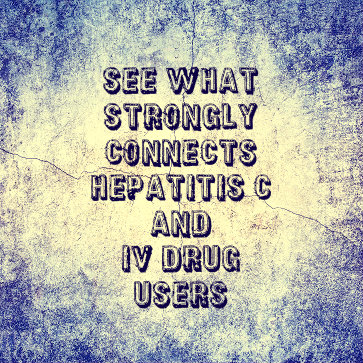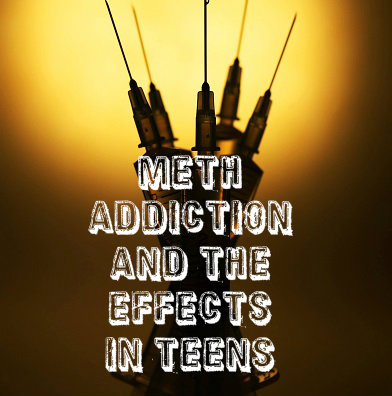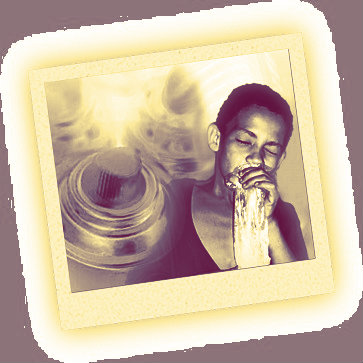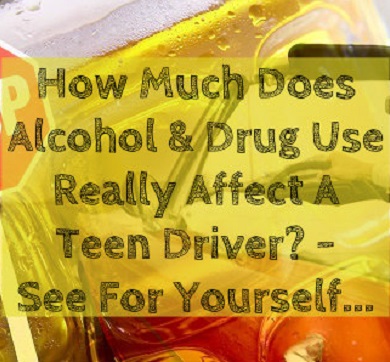29 Nov 2013
Why ADHD And Drug Abuse Commonly Occur Together
According to psychiatric literature, as many as five percent of the American population deals with attention deficit hyperactivity disorder (ADHD), and half of those people may also have a problem with substance abuse. That’s because the two conditions frequently appear together, a relationship referred to as comorbidity. Because both stem from dysfunction in the reward system, it can be hard to untangle and treat the conditions simultaneously.
Connection Factors Between ADHD And Drug Addiction
 Past studies of twins have shown a high comorbidity between ADHD and drug addiction. These studies point to shared genes which make a person more susceptible to both conditions. When a person has a genetic predisposition combined with environmental risk factors, the likelihood of the two conditions arising increases. To compound the problem, other studies reveal that people with ADHD are at greater risk for earlier onset of drug abuse, more serious abuse and a harder time remaining abstinent.
Past studies of twins have shown a high comorbidity between ADHD and drug addiction. These studies point to shared genes which make a person more susceptible to both conditions. When a person has a genetic predisposition combined with environmental risk factors, the likelihood of the two conditions arising increases. To compound the problem, other studies reveal that people with ADHD are at greater risk for earlier onset of drug abuse, more serious abuse and a harder time remaining abstinent.
Diagnosing Adult ADHD
Both ADHD and substance abuse are diagnosed by using established tools which are essentially checklists of symptoms. In order to diagnose ADHD, a person must demonstrate a minimum of six symptoms of either hyperactivity or distractibility, but not necessarily symptoms in both categories. Doctors may be hesitant to diagnose adult ADHD, and even more so when a patient appears to be dealing with substance abuse as well, just because it requires a bit of detective work and a delicate balancing act in terms of treatment.
One way doctors can diagnose adult ADHD is by asking open-ended questions such as, “Why do you suspect that you may have ADHD?” this may result in symptoms being displayed without prodding. If this doesn’t happen right away, doctors can ask clarifying questions such as, “What does your work life look like?” or “Describe several of your closest relationships.” In terms of substance abuse, it is best to be forthright with questions such as, “Do you use any substances? “followed by, “Describe your substance use.”
A long-term picture will be the most accurate, so asking about grade school and high school experiences can be helpful. However, in some cases a parent may have performed the role of compensating presence – monitoring homework, ensuring the student was on time, helping them keep things organized, etc. – so with adult patients asking about college life or work life may actually provide the clearest idea of what symptoms are present. Whenever possible, having the added perspective of another person such as a spouse, parent or sibling is useful.
Symptoms Doctors Will Explore When Diagnosing ADHD
- Trouble focusing on a single task. The person has difficulty reading, leaves tasks unfinished, is not a good listener, engages in a lot of daydreaming and frequently loses things.
- Trouble staying focused. The person finds it hard to plan and organize. Time management is a problem issue. The person has difficult in recognizing potential consequences of actions.
- Trouble with motor control. The person exhibits restless, non-goal oriented movement and they can’t sit still for extended periods of time. It is important to note that the person who doodles and draws or who packs their daily schedule may also be showing signs of difficulty.
- Trouble with self-control. The person is impulsive, talking and acting without thinking. They frequently interrupt others and have little patience.
What These Brain-Function Symptoms Reveal
Each of these symptoms reveals sluggishness within the brain’s mesolimbic dopamine system, or reward pathway. Healthy people feel a certain amount of elation when they embrace another, hear beautiful music or engage in fun physical activity, and the reward circuitry in the brain is pre-set to respond positively to these things. When a person has an ill-functioning reward system, they may engage in riskier behaviors in order to stimulate or activate the reward response.
Treatment For ADHD And Substance Abuse
Drug use exacerbates this problem. Therefore, the best treatment will result from a multi-pronged approach. Persons with comorbid ADHD and substance abuse will probably require individual counseling, support group therapy, carefully monitored medication therapy and specific lifestyle changes.
Read More About Addiction And Mental Disorders
Hepatitis C is a form of serious, liver-damaging illness triggered by infection with a virus commonly known as the hepatitis C virus (HCV). Current evidence indicates that, throughout the U.S. and the rest of the world, the majority of new cases of this illness stem from the unsanitary injection of IV drugs (intravenous drugs). In a study published in June 2013 in the Harm Reduction Journal, a multi-institution research team reviewed some of the potentially overlooked factors that contribute to the ongoing connection between IV drug use and HCV infection. The researchers concluded that patient-doctor miscommunication and lack of access to required resources have a considerable impact on the reinforcement of this connection.
How Is Hepatitis C Spread?
 Hepatitis C is one of four viral diseases that get their names because they damage function inside the human liver. It is a blood-borne illness that typically occurs when an individual with HCV knowingly or unknowingly exposes others to his or her infected blood. Common routes for this exposure include intentional or accidental needle sticks or injections, as well as the accidental entry of infected blood through a cut or through the mouth. Additional, less common potential routes of exposure include mother-to-child transmission inside the womb, organ transplant procedures, kidney dialysis procedures and blood transfusions.
Hepatitis C is one of four viral diseases that get their names because they damage function inside the human liver. It is a blood-borne illness that typically occurs when an individual with HCV knowingly or unknowingly exposes others to his or her infected blood. Common routes for this exposure include intentional or accidental needle sticks or injections, as well as the accidental entry of infected blood through a cut or through the mouth. Additional, less common potential routes of exposure include mother-to-child transmission inside the womb, organ transplant procedures, kidney dialysis procedures and blood transfusions.
Hepatitis C Symptoms
The hepatitis C virus can produce either acute (short-term) infections or chronic (long-term) infections. In both cases, affected individuals often have few or no early symptoms of the changes going on inside their livers. If early symptoms do occur, they are as follows.
Early Hepatitis C Symptoms
- Jaundice
- Loss of energy
- Spikes in body temperature (i.e., fevers)
- Swelling in the abdomen
- Abdominal pain in the liver region
- Nausea and vomiting
- Declining appetite
Eventually, people affected by chronic hepatitis C can develop serious or potentially fatal cases of cirrhosis (liver scarring) or liver cancer. Roughly 75 percent to 85 percent of people who contract hepatitis C develop the chronic form of the illness.
IV Drug Use And Risky Behaviors
IV drug users have an uncommonly high rate for hepatitis C (and a number of other serious, infectious diseases) for several reasons. First, the introduction of a hypodermic needle into a vein provides direct access to a person’s bloodstream. In combination with poor needle-related hygiene, this method of drug use provides the hepatitis C virus with a very easy avenue for entry into the human body. The most common unhygienic practice associated with transmission of the virus is the sharing of dirty needles among two or more drug users. In addition, people who take drugs intravenously often establish other patterns of behavior that can further increase their risks for HCV exposure. Examples of these harmful behavioral patterns include having unprotected intercourse with intimates and engaging in sex-for-drugs exchanges with others.
Factors For The Connection Between Hepatitis C Infections And IV Drug Use
In the study published in the Harm Reduction Journal, researchers from seven U.S. institutions looked at some of the lesser-known factors that can account for the strong, enduring connection between IV drug use and hepatitis C infections. Rather than take a large-scale approach, they focused on 14 groups of IV drug users in the San Francisco area and the New York City area. Altogether, these groups contained 95 individuals. Each of the participating individuals took part in a series of discussions designed to identify specific hindrances to the adequate prevention or treatment of HCV in IV drug-using populations.
After reviewing and analyzing the results of the participants’ discussions, the researchers identified several potential barriers to the receipt of adequate services or the accurate transmission of HCV-related information from doctors and other health care professionals to people who use IV drugs. These barriers include lack of a full understanding among IV drug users about the significance of an HCV diagnosis, lack of drug user knowledge regarding the symptoms and potential consequences of hepatitis C, a poor drug user understanding of the need to monitor the course of a hepatitis C infection, lack of facilities where intravenous drug users can actively seek out HCV testing, and lack of a broad range of options for the treatment of diagnosed cases of hepatitis C.
Health Care Professional’s Role In HCV/ Hepatitis C Treatment
In light of their findings, the authors of the study published in the Harm Reduction Journal concluded that health care professionals must increase their efforts to relay accurate, sufficiently detailed information about HCV and hepatitis C. They also concluded that these improved educational efforts must take place both in drug treatment centers and in facilities that perform disease screenings.
Read More About IV Drug Users And Other Dangerous Risks
The 18th century British philosopher and statesman Edmund Burke once famously declared: “Those who don’t know history are destined to repeat it.” In the years since, Burke’s quote has been repeated often in slightly different forms by a variety of public figures, which is a testament to how much truth the sentiment behind it contains.
 This statement could undoubtedly be applied quite aptly to the ongoing War on Drugs. Over the past several decades United States law enforcement agencies have spent over $1 trillion persecuting this war, and during that time hundreds of millions of tons of illegal drugs have been seized and destroyed here and around the world. And yet, much to the chagrin of those responsible for the continuation of this military-style anti-drug campaign, there is no evidence to suggest that any drug pipelines have been permanently closed off or that the flow of illegal substances has been reduced in any meaningful way as a result of this approach. In fact, the international drug trade appears to be more profitable and efficient than ever before.
This statement could undoubtedly be applied quite aptly to the ongoing War on Drugs. Over the past several decades United States law enforcement agencies have spent over $1 trillion persecuting this war, and during that time hundreds of millions of tons of illegal drugs have been seized and destroyed here and around the world. And yet, much to the chagrin of those responsible for the continuation of this military-style anti-drug campaign, there is no evidence to suggest that any drug pipelines have been permanently closed off or that the flow of illegal substances has been reduced in any meaningful way as a result of this approach. In fact, the international drug trade appears to be more profitable and efficient than ever before.
Effects Of Drugs On The Black Market
The Sept. 30 edition of the online medical journal BMJ Open includes a report from a multi-national team of researchers who studied and analyzed international drug surveillance databases in order to identify long-term trends in the illegal drug trade. They discovered that despite the stalwart anti-drug efforts of law enforcement, officers and administrators from across the globe, over the last 20 plus years the cocaine, heroin and marijuana available on the international black market has gotten both stronger and less expensive.
In the United States, from 1990 to 2007 the potency of these three substances rose by 60 percent, 11 percent and 160 percent respectively, and yet the street price of these three popular illegal drugs actually fell by 80 percent over the same time period when adjusted for inflation. The increased strength of such drugs is a testament to the fact that demand for illegal substances has remained high enough to spur constant innovation in production methods, while their steadily dropping price shows that supplies are bountiful and that users of cocaine, heroin or marijuana are still very much operating in a buyer’s market.
War On Drugs And Illegal Drug Use
Contrary to hype and popular opinion, the War on Drugs was never designed to stop the trade of illegal substances entirely. Instead, its goal has been to disrupt supply chains just enough to drive prices up and make dangerous intoxicants unaffordable to many who might be tempted to experiment with them. But even this modest goal has proven elusive, and few if any honest observers still believe that ramped up law enforcement strategies will ever reduce illegal drug consumption or prevent millions of users from plunging headfirst into the dark canyon of substance abuse and addiction.
At the present time, the global black market drug trade generates about $350 billion in tax-free profits annually. In the U.S. alone, there are approximately 22 million illegal drug users above the age of 12, and while the majority could not accurately be classified as addicts, those who do become dependent on substances like cocaine, heroin and methamphetamine usually have no difficulty in obtaining the supplies they need to quench their addictive thirsts. And with drugs becoming stronger and cheaper, we may start seeing greater percentages of casual drug aficionados eventually succumbing to addiction, since these individuals will be able to afford greater quantities of illegal substances even as the high they are getting from what they are using intensifies.
Drug Popularity, Reputation And Availability
It is true that the rates of usage of drugs such as cocaine, angel dust and heroin have generally been declining over the years. However, it would be a mistake to assume that the drug war has been successful just because certain drugs have now gone out of style. Once a drug starts to get a bad reputation, its use will usually decline. But as some drugs become less popular, other illegal substances will inevitably flood the market to fill the void, and, as a result, the whole cycle of casual use, abuse, addiction and disillusionment just keeps repeating itself with no apparent end in sight.
What Can Help Drug Addiction?
We can only speculate about what might finally make the merry-go-round of drug dependency stop spinning—expanded availability of treatment, more drug courts, innovative educational campaigns, greater social awareness, a reduction in the rates of poverty and unemployment, community outreach programs, or some combination of all of the above. It seems clear, however, that more interdiction, indictment and incarceration will not make the decisive difference.
The “Just Say No” campaigns were mocked in their day and seem hopelessly quaint now. Trying to shame people into avoiding drugs has not worked any better than treating drug use as a crime. But in the end, illegal drug use will only decline precipitously if enough people decide the risk of addiction is too great to flaunt. So in a sense, it really is about just saying no, and being able to recognize the critically important reasons it is logical to do so. Cheaper and stronger means extreme danger, and consequently a refusal to get involved with drugs in the first place is the smartest decision one can make.
13 Nov 2013
Why Is Drug Use Surging In Baby Boomers?
Statistics gathered by the Substance Abuse and Mental Health Services Administration, or SAMHSA, show a disturbing trend among older Americans. Members of the Baby Boom generation are using drugs and getting addicted to them in record numbers. Whether we can explain the trend or not, the fact remains that elder drug abuse presents some unique problems that require unique approaches for prevention and treatment.
 The statistics from SAMHSA show that among older Americans in recent years, marijuana use has increased five-fold, cocaine use has quadrupled, heroin abuse has doubled, and abuse of prescription drugs has more than quadrupled. The survey from SAMHSA also records treatment for drug abuse and addiction and found increases in the numbers of Boomers getting help for alcohol abuse in combination with cocaine use, and for abusing prescription painkillers. Emergency room visits for painkiller abuse and overdoses increased greatly over the last decade.
The statistics from SAMHSA show that among older Americans in recent years, marijuana use has increased five-fold, cocaine use has quadrupled, heroin abuse has doubled, and abuse of prescription drugs has more than quadrupled. The survey from SAMHSA also records treatment for drug abuse and addiction and found increases in the numbers of Boomers getting help for alcohol abuse in combination with cocaine use, and for abusing prescription painkillers. Emergency room visits for painkiller abuse and overdoses increased greatly over the last decade.
Explanations And Complications Of Drug Abuse In Older Americans
At first glance, the statistics surrounding the use and abuse of drugs in older Americans seems surprising. However, it is important to understand that we are discussing a generation of people who came of age in the 1960s, a time of experimentation and rebellion against authority. In tracking the drug and alcohol behaviors of this generation over the years, finding that they now, in their older years, are still using drugs is not a surprise. It only seems shocking when compared with the generations that came before them.
Unfortunately, drug abuse is even more of a problem for a person in his 50s and 60s than it was when he was in his 20s. As we age, our metabolism slows. For an older person abusing drugs or drinking too much alcohol, the time it takes to metabolize and get out of his system is much longer. An older person using may be intoxicated for longer and, therefore, at risk for more accidents and injuries.
Another issue is that drug users in their 50s or 60s are more likely to have health problems than they did in their younger years. Drug or alcohol abuse may exacerbate these problems, or even interact badly with prescribed medications. Furthermore, the symptoms of these other health conditions may mask the usual signs of drug abuse or addiction.
Signs Of Drug Abuse
Drug abuse and addiction are serious problems at any age, but in older Americans they present greater risks and complications. It is important to be aware of the possibility of drug use and to look out for signs in loved ones. Because another health problem may cause symptoms that mask the physical signs of drug abuse, watch for changes in behavior as the sign of a problem. Mood swings that are unexplained could be a sign of addiction, drinking or drug abuse. Changes in personality are also troubling. When someone just doesn’t seem like himself anymore, there could be a problem with drug abuse.
Prescription abuse is a growing problem among all age groups, so look for signs that your older friend or family member is abusing them. This could mean that he is requesting more refills for painkillers, seeing several doctors to get more prescriptions, going to more than one pharmacy or in other ways is trying to get more of his medications than has been prescribed.
Getting Help For A Loved One Abusing Drugs Or Alcohol
If anyone you love or care about is abusing drugs or alcohol, it is important to help him seek treatment; with an older person, it is especially imperative. Drug abuse can cause even more problems for someone who is older and should be stopped in its tracks. Having the courage to confront your parent, spouse, or other loved one about your suspicions could just save his life.
Confrontation is never easy so be prepared. Bring one or two other people along, friends or family members your loved one trusts. Be ready with solutions so that you are not simply accusing, but helping. Do your research ahead of time and find facilities for treatment that are prepared to work with older patients. As the problem of drug abuse continues to rise in the older demographic, more treatment centers are focusing on the age group. You should be able to find treatment plans that will suit the specific needs of your loved one and that will help him feel comfortable while getting well.
11 Nov 2013
Meth Addiction And The Effects In Teens
Fans of the hit crime drama Breaking Bad may have become familiar with the dangers of methamphetamine use. However, as a parent, you may have questions about methamphetamine abuse in teenagers and whether it requires drug rehab treatment. Surveys suggest that 2 to 3.5% of adolescents have used methamphetamines [1]. Also called “speed” or “glass”, it’s a highly addictive stimulant.
How Meth Works
Methamphetamine – or “meth” for short – is a type of amphetamine, a drug that acts on the body’s central nervous system. The drug works by increasing dopamine levels within the brain to very high levels. Dopamine is the brain chemical that’s linked to pleasure, reward, motivation, and also motor function. When dopamine levels skyrocket, as they do during meth use, the user experiences a pleasurable rush that is often compared to euphoria.
While there are several types of amphetamines, meth is generally considered the most potent. The drug can be snorted, injected, or taken orally. Some abusers use a method called parachuting, which involves crushing a pill and then rolling the powder into a piece of tissue or toilet paper. The entire package – tissue and all – is then swallowed, delivering what’s believed to be a stronger, faster high because the pill’s outer protective layer has been destroyed.
 Teen meth addicts will typically use daily or nearly daily. Addiction requiring drug rehab treatment can develop quickly, sometimes within just a few uses. Chronic abuse of the drug leads to tolerance. As one’s tolerance level increases so does the amount of the drug that’s needed in order to achieve the euphoric high.
Teen meth addicts will typically use daily or nearly daily. Addiction requiring drug rehab treatment can develop quickly, sometimes within just a few uses. Chronic abuse of the drug leads to tolerance. As one’s tolerance level increases so does the amount of the drug that’s needed in order to achieve the euphoric high.
Effects Of Meth
Since meth is a stimulant, like cocaine, a teen will experience immediate physical effects, even when the drug is taken in small amounts. Meth users experience increased heart rate and respiration, irregular heartbeat, high body temperature, decreased appetite, inability to sleep, and increased physical activity.
An adolescent with a long-term meth addiction can experience more serious effects. Anxiety, confusion, and extreme weight loss are common. Many develop severe dental problems, such as tooth decay and loss, because the drug reduces output of saliva, which normally protects the mouth, and drug users often have poor dental hygiene.
Teen meth addicts are also at risk because the drug enhances the sex drive. Several studies have found that youth, especially females, who use meth are more likely to engage in risky sexual behaviors [2]. This potentially leads to unsafe sexual practices, including having sex without protection. Research has found a strong association between meth users and sexual risk-taking. A study of adults using meth found they were 1.7 times more likely to have gonorrhea and twice as likely to have chlamydia [3].
Chronic methamphetamine abusers might experience serious psychotic symptoms, including hallucinations, delusions, or paranoia. This can lead to physical problems as well. For instance, a meth user might scratch and gouge at their skin to remove “bugs.” Auditory hallucinations can be particularly dangerous if the addict believes “voices” are commanding him or her to harm others, a symptom that makes drug rehab treatment that much more important.
Meth use in teens can also cause permanent brain damage. Research shows that chronic use causes structural and functional changes to brain areas linked to memory and mood [4, 5]. In addition, brain imaging has shown that meth use changes the dopamine system in a way that reduces verbal learning and motor skills [6]. Using the drug over time also disrupts the body’s normal production of dopamine; as a result, chronic users show severe mood swings.
Signs Of Meth Abuse In Teens
- Euphoric moods (may appear unusually happy)
- Paranoia
- Reduced appetite
- Incessant talking
- Rapid weight loss
- Dilated pupils
- Dry, itchy skin
- Skin sores
- Intense mood swings
- Anxiety, nervousness
- Shaky hands
- Violent or aggressive behavior
- Excessive sweating
Symptoms can become worse as a teen’s meth addiction deepens. For instance, a meth addict often appears undernourished or even sick. He or she may have frequent mood swings, abruptly switching from chatty and friendly one moment to aggressive and hostile the next.
Treatment For Meth Addiction
Due to the serious short-term and long-term health risks, including brain damage and even death, meth addiction in adolescents requires immediate drug rehab treatment. Meth abusers can experience intense withdrawal symptoms, including severe agitation, anxiety, sleeplessness, and strong urges to use. Since withdrawal symptoms can be so powerful, teens should detox in a treatment center where they can be medically monitored.
After the drug is out of the body, your teen will start a treatment plan that will likely have several components based on his or her needs. Currently, there are no approved medications to treat methamphetamine addiction. However, rehab centers have a number of therapies for helping adolescents recover. For example, an addictions specialist may recommend cognitive behavioral therapy. This particular type of therapy helps teens learn more about the factors, such as negative emotions, irrational thoughts, or unhealthy behaviors, that contribute to their drug use. This therapy also teaches them how to deal with those factors in a drug-free way. Contingency management may also be beneficial in a drug treatment program. It provides tangible incentives, such as movie tickets or cash, for drug-free urine samples.
Alternate Therapies For Addiction
Other therapies may help your teen as well. For example, animal-assisted therapy, which involves the use of animals like dogs or horses, can be especially powerful. This treatment approach can help addicted teens reduce anxiety, build self-confidence, and develop trust. Talk with an addiction specialist to learn more about the benefits of animal-assisted therapy.
Family education and counseling will also be essential for guiding your teen through recovery. Educational sessions help parents and family members better understand the nature of addiction. They also show ways to help an addicted teen stay free of drugs. In family counseling, a therapist works with family members to pinpoint and resolve conflicts and communication issues, including those that have played a role in your teen’s decision to use drugs. Family therapy can play an important role in helping your teen avoid a relapse down the road.
Meth Affects The Brain’s Pleasure Center Long After Use
Treating an addiction to meth is challenging, in part, because the brain’s ability to produce dopamine is hampered for up to 6 months or more after drug use stops. As a result, addicts may be unable to experience pleasure. This can make it difficult for them to find enjoyment in even simple activities like spending time with friends, seeing a movie, or relaxing on the beach. This lack of positive emotion can compel many teens to start using again, just so they can feel some form of pleasure.
Yet, despite the challenges, adolescents can fully recover from a methamphetamine addiction. If you suspect or know that your teen is abusing meth, consult a drug rehab treatment as soon as possible – preferably one that is skilled in handling meth abuse and addiction in teens. The staff will work with you to lay out a plan for recovery that gives your teen the best chance for success.
Read More About What Meth Use Can Do To You
References:
[1] http://www.drugabuse.gov/drugs-abuse/methamphetamine
[2] http://www.biomedcentral.com/1471-2431/8/48/abstract
[3] http://www.healio.com/infectious-disease/hiv-aids/news/print/infectious-disease-news/%7B458a3b28-01a8-45ca-af13-dead2d781f8b%7D/methamphetamine-use-increases-risk-of-acquiring-hiv-stds-and-mrsa
[4] http://www.jneurosci.org/content/24/26/6028.long
[5] http://www.ncbi.nlm.nih.gov/pubmed/14706946
[6] http://www.ncbi.nlm.nih.gov/pubmed/11229977
Adolescence is a time of change and self-discovery. For some teens this change involves experimentation with substances, or perhaps even the development of alcohol or drug addiction. That seems to be particularly true for lesbian, gay, bisexual, and transgender (LGBT) teens, a group that shows alarming rates of substance abuse and addiction. If you’re a parent or caregiver, keep reading to learn more about why LGBT teenagers have higher rates of substance abuse and what you can do to help.
LGBT Teen Addiction Statistics
 Research consistently shows that lesbian, gay, bisexual, and transgender teens abuse substances at higher rates than their heterosexual peers. Overall, the odds of abusing substances are 190% higher for LGBT teens than for teens that are heterosexual. However, alcohol and drug use rates are even higher in specific LGBT populations. Bisexual youth have substance abuse rates that are 340% higher than heterosexuals, while females have rates that are 400% higher [1].
Research consistently shows that lesbian, gay, bisexual, and transgender teens abuse substances at higher rates than their heterosexual peers. Overall, the odds of abusing substances are 190% higher for LGBT teens than for teens that are heterosexual. However, alcohol and drug use rates are even higher in specific LGBT populations. Bisexual youth have substance abuse rates that are 340% higher than heterosexuals, while females have rates that are 400% higher [1].
This doesn’t mean that every non-heterosexual teen will become addicted. In fact, research suggests some of the lowest levels of substance abuse are found among students, regardless of sexual orientation, who do not experience homophobic teasing and feel they are in a positive school environment [2].
The Link Between LGBT Teens And Addiction
Identifying as a non-heterosexual person does not in itself lead to alcohol or drug addiction. However, LGBT youth may be forced to deal with unique challenges; it’s these challenges that can raise their risk of addiction significantly.
For instance, lesbian, gay, bisexual, and transgender teenagers are at higher risk for bullying from their peers. Whether the bullying behavior involves being pushed around in a hallway or being victimized on Facebook, it can isolate an adolescent and lead to feelings of depression, which is a risk factor for substance abuse. One study found that teens bullied because they were perceived as gay were more likely to be depressed than those bullied for other reasons or not at all [3].
The threat of violence against LGBT people might also drive a teen to make unhealthy choices that include alcohol or drug abuse. About 21% of all hate crimes in 2011 were based on the victim’s sexual orientation, according to the FBI. Of those, 60% were attacks specifically against gay men and 11% targeted lesbians [4]. Adolescents who feel threatened may also feel the need to self-medicate their severe stress and anxiety with alcohol or drugs.
Parental rejection may also contribute to an LGBT teen’s alcohol or drug addiction. For example, young adults who were rejected by parents for their sexuality during adolescence were almost 4 times more likely to use illicit drugs than those who didn’t experience rejection [5].
Community factors can play a role as well. A study of non-heterosexual adults found that those who lived in states that banned same-sex marriage had a 42% increase in alcohol use disorders [6]. While this particular study examined adults, it’s possible that living in an environment that actively rejects an LGBT teenager’s identity can spur substance abuse.
How To Help LGBT Teens
As a parent or caregiver, it’s essential to help a teenager struggling with substance abuse. Excessive use of alcohol or the abuse of prescription or illicit drugs lays the foundation for a life that’s spent dealing with an addiction rather than living up to potential. Addiction is a chronic mental health condition, although with treatment it can be managed and even overcome. Finding help now gives your teen an opportunity to get back onto a healthier path before an accident or overdose makes it too late.
Seek professional help. Alcohol and drug abuse should be treated by qualified professionals. If possible, choose a recovery facility skilled in working with LGBT youth. These centers will have expertise in helping a lesbian, gay, bisexual, or transgender addict deal with situation-specific emotions and behaviors that play a role in his or her addiction. For example, a rehab center with an LGBT program will work with your teen on matters dealing with sexuality, sexual identity, gender identity, and family dynamics.
If you cannot locate alcohol or drug addiction treatment specifically for an LGBT addict, don’t give up hope. A qualified addiction center can still treat your teen for substance abuse. You’ll work with a specialist to develop a treatment plan that addresses your teenager’s needs. Depending on the substance, he or she may need detoxification (detox) as well as therapy. Since teenagers are heavily influenced by their peers, it’s normal for addicted teens to require residential rehab so they can fully immerse themselves in a safe, substance-free environment.
Substance abuse aftercare is also a critical part of maintaining sobriety in adolescents. Addiction aftercare, which will likely include therapy, ensures that a teen addict continues to have access to the tools that help him or her stay in recovery. In addition, LGBT teens are particularly vulnerable to bullying and, in some cases, violent attacks because of their sexual identity. An aftercare program will help a teenager cope with those challenges in a healthy way.
Create a supportive home. Researchers have found that parental rejection during an LGBT teen’s adolescence boosts the risk of substance abuse. Consider how you or other caregivers have reacted to your teenager’s identification as non-heterosexual. If you or a spouse has reacted with disappointment or anger, or if you’ve rejected the teen outright, start educating yourself in order to better understand your own feelings. Support groups for LGBT parents can be an ideal resource for those struggling to accept a non-heterosexual teenager. You’ll find beneficial support from parents who have experienced the same emotions and challenges.
Encourage your teen to connect. Support from others in the LGBT community will nurture your teenager in a positive way. Building friendships with those who are going through the same life experiences will help him or her feel less isolated. Be sure, however, that these connections are the kinds that encourage sobriety and a healthy lifestyle.
Alcohol and drug addiction can ruin the life of your teen. Don’t wait to get help. Reach out to treatment professionals who are experienced in working with LGBT . Doing so will give your son or daughter the best chance to have an addiction-free life.
References:
[1] http://www.ncbi.nlm.nih.gov/pmc/articles/PMC2680081/
[2] http://www.cdc.gov/lgbthealth/youth.htm
[3] http://library.wheelerclinic.org/poc/view_doc.php?type=news&id=155391&cn=5
[4] http://www.fbi.gov/about-us/cjis/ucr/hate-crime/2011/narratives/incidents-and-offenses
[5] http://pediatrics.aappublications.org/content/123/1/346.abstract
[6] http://ajph.aphapublications.org/doi/abs/10.2105/AJPH.2009.168815
Inhalants are a broad range of common, commercially available chemicals that get grouped together because they can function as makeshift drugs when inhaled through the nose or mouth. Use of these chemicals can trigger a number of serious or potentially fatal short- and long-term health problems. In a study published in 2013 in the journal Addiction, a team of Australian researchers assessed the prospects for eventual recovery from the nervous system-related damage associated with inhalant use. These researchers concluded that most affected individuals substantially or fully recover their nervous system health after 15 years of abstinence from inhalant intake.
Types Of Inhalants

Courtesy of: www.drugfreeworld.org
Inhalants get their name because people almost always abuse them by breathing them in, rather than by injecting them or using other means of introducing them into the body. Substances employed in this manner in the U.S. and throughout the world include aerosol-based sprays (e.g., paints, computer cleaners and deodorants), volatile solvents (e.g., glues, gasoline and degreasers), gases (e.g., nitrous oxide, butane and refrigerants) and nitrites or “poppers” (e.g., amyl nitrite and butyl nitrite).
How Inhalants Work
Other than nitrites, most inhalants achieve their mind-altering effects by interfering with the normal function of the central nervous system (spinal cord and brain) and producing an effect that mimics certain aspects of alcohol intoxication. Affected individuals may also develop problems with delusional thinking and/or hallucinations (known collectively as psychosis). According to figures compiled in 2011 by the National Institute on Drug Abuse, about 10 percent of high school-age children in the U.S. have used an inhalant at least once.
Health Problems Of Inhalant Use
Short-term health problems associated with inhalant abuse include seizures, an unusually slow or fast heartbeat, high blood pressure, muscle function impairment, increased accident rates and increased levels of participation in risky behaviors. Short-term users are also susceptible to a phenomenon called sudden sniffing death syndrome, which occurs when an inhaled substance triggers a dangerously unstable heartbeat. Long-term health problems associated with inhalant abuse include central nervous system damage (usually brain damage), lung damage, kidney damage, heart damage, liver damage, mild to severe impairment of conscious mental function, increased risks for violent outbursts and increased risks for diagnosable mental disorders such as depression or antisocial personality disorder.
Inhalant Abuse Treatment
Many inhalant users don’t seek any type of medical treatment unless their patterns of abuse lead to obvious physical problems. For this reason, inhalant abuse treatment commonly starts with short-term efforts designed to stabilize a patient and counteract the effects of the specific inhalant substance in question. After an individual receives short-term treatment, he or she typically benefits from longer-term treatment in a program specifically designed to address inhalant-related recovery issues. Such a program usually features steps that include dealing with the effects of inhalant withdrawal, acquiring the personal and social skills required to abstain from inhalant use over extended periods of time and preparing for a return to everyday life after the active phase of treatment comes to a close. Some people also need to deal with additional issues related to other forms of substance abuse or various types of mental illness.
Long-Term Abstinence From Inhalants
Previous research efforts have shown that, after roughly two years of abstinence, most people who chronically abuse inhalants gradually experience a restoration of their conscious mental function, as well as a restoration of the normal physical function in their central nervous systems. In the current study published in Addiction, researchers from five Australian institutions examined the long-term mental and physical recovery outlook after 15 years of abstinence from inhalant use. This examination included 60 adults in long-term recovery from the chronic abuse of lead-free inhalants and 17 adults in long-term recovery from the chronic abuse of inhalants that contain lead, as well as a comparison group of 27 adults with no history of inhalant use/abuse.
After reviewing their findings, the researchers concluded that, after 15 years in recovery, former chronic abusers of lead-free inhalants have mental and physical nervous system functions that are basically indistinguishable from the mental and physical functions of people with no history of inhalant use. The former chronic users of lead-containing inhalants (usually lead-containing gasoline) commonly incur brain damage related to lead exposure. As a result of this exposure, they typically experience permanent changes in their normal mental and physical function. In turn, the permanent nature of their impairment contributes to ongoing problems even after 15 years of inhalant abstinence. While some users of lead-containing inhalants see modest improvements in their central nervous system-related abilities, others see no significant improvement over time.
The long-term risks for teens that abuse substances are increased likelihoods of adult addiction, developing certain cancers or heart disease and engaging in dangerous sexual behaviors that could result in contracting a sexually transmitted disease and/or an unplanned pregnancy. But there are also serious short-term risks, with the most serious being the increased likelihood of getting into a vehicular accident.
In addition, while many teens are advised not to drive a car while under the influence they may not use enough caution when considering the sobriety of another driver.
A recent study highlights the risk teens take when they drive a car or enter the car of a driver that is under the influence. Conducted by researchers at the Mailman School of Public Health at Columbia University, the study examined the risk of drug use and the risk of drug use combined with alcohol use and how such use impacted the risk of a fatal crash.

Drastic Increases In Fatal Crashes When Drugs Are Involved
The researchers found that there was a drastically increased risk of experiencing a fatal crash when drugs were involved in an accident, and this was particularly true when the drugs were used in addition to alcohol.
The study’s data was pulled from two national databases commissioned by the National Highway Traffic Safety Administration: the 2007 National Roadside Survey of Alcohol and Drug Use by Drivers and the Fatality Analysis Reporting System (FARS). FARS compiles investigation information for all vehicular crashes that resulted in a fatality within 30 days of the crash occurring on a public road.
This study is unique in its use of the two databases together to compile information about circumstances surrounding events, such as the individuals and vehicles involved.
The study, led by Guohua Li, MD, DrPH, professor of Epidemiology and director of the Center for Injury Epidemiology and Prevention, found that 31.9 percent of all drivers implicated in fatal crashes tested positive for at least one drug. Of those interviewed at roadside, 13.7 percent tested positive for at least one drug. Overall, drivers that test positive were three times more likely to be involved in a fatal car crash, with the highest risk associated with depressants followed by stimulants.
The study also showed that blood alcohol levels were increased in 57 percent of those involved in fatal crashes, while 8.8 percent of the roadside interviews had an elevated blood alcohol level. Approximately 20 percent of the fatal crash drivers tested positive for alcohol consumption and one or more additional drugs. Among the roadside interviews, 2.2 percent tested positive for alcohol and another drug.
Alcohol Increases Fatal Car Crashes By 13 Times!
The risk of involvement in a fatal car crash increased 13 times for those that tested positive for alcohol only, two times for those that were drug-positive and 23 times for drivers that were under the influence of both drugs and alcohol.
The authors of the study note that drugs may be detectable in a driver’s blood test that may not be causing impairment. In addition, the authors say that the study does not account for various levels of tolerance that may be exhibited among individual drivers, making it difficult to measure drug impairment.
Decreased Risks When Parents Talk With Their Teens
The findings highlight the importance of talking with teens about the risks of driving a vehicle while under the influence or entering a vehicle in which the driver has been using.
Parents that explain the risks and dangers can help their child make an informed decision.


